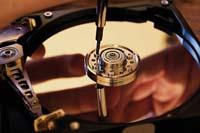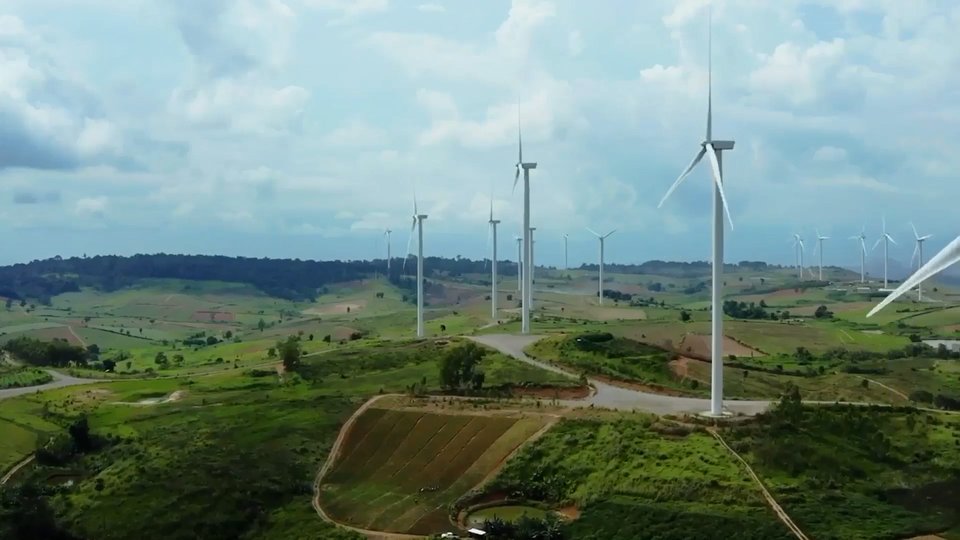Mario Baibich: "I didn't think I had such a rapid technology transfer"

To do this, you first need to know what magnetoresistance is. It is called magnetorresistance to the variation of electrical resistance that occurs in materials due to a magnetic field. The magnetic gigantesistence is the magnetorresistance in which the nanoscopic systems, that is, those of approximate thickness of 3 or 4 atoms, show a parallel or antiparallel magnetic orientation of the layers. When the orientation between layers is anti-parallel, the resistance is usually high. When the orientation of the layers is parallel, it drops. That is the basis of giant magnetoresistance.
Currently, hard drives containing computers, cameras, iPod and devices of this type work with a giant magnetoresistance or its derivative. In fact, with the help of the gigantic magnetoresistance, smaller surfaces are obtained to store information.
In the future, computers may work with non-volatile RAM. These memories immediately show when the computer is turned on the same screen that they left when the computer is turned off. This would logically change the way you work with computers. And now you have to follow a process to connect and disconnect the computer. In addition, when turning off the computer, the memory is also turned off.

A few years ago a limit was established, the superparamagnetic limit. It is the limit at which the appliances are switched off by themselves. We overcame this barrier with various engineering tricks and manufactured devices that did not lose information. Yet speaking of borders is very dangerous.
I don't think the size can be much smaller. And we work in very small dimensions. We currently work with a hundred atoms. However, if at some point we were able to record all this information into a single atom, this would be to work at the maximum limit.
Since 1988, all hard disk manufacturers work with the technology of magnetic gigantesistence. Currently, some work with their own derivative. Undoubtedly, this technology is used by all computers. Even if we visit the fruit shop, your computer works with a giant magnetoresistance. This technology has been very successful and applies to millions of computers worldwide.
Yes, then. In this sense it is being investigated both in my laboratory of the University Porto Alegre of Brazil (Universidade Federal do Rio Grande do Sul) and in the laboratory of the Magnetism Group of the UPV. It would be related to recording based on the polarization of the electric current. The key is in building a memory without moving aspects. In fact, the limit of this type of memory is lower than that of those currently produced. However, debate is generated when determining the speed at which this type of tool is used.

Eleven tools have been developed and will continue to be manufactured that work under the same principle as the magnetic gigantesistence.
For example, IBM has opted for such memories and uses microwires in recordings. For example, IBM has opted for such memories and uses microwires to make recordings instead of hard drives.
I feel totally rewarded. I myself measured for the first time the effect of giant magnetoresistance. I got a lot of results, but somehow they didn't believe me in the first... Behind all this is a complete story. The truth is that with them I feel totally rewarded. The Nobel prize is received by a maximum of three researchers, who in this case have been awarded by the director of the laboratory.
The truth is that there is not much. When we made the first measurements, we knew we had something important in our hands. But I didn't think I was going to have such a quick technology transfer. I never thought we would reach most homes in the world. We thought it was basic academic research. Our work attracted, among other things, the attention of an entity in the field of magnetic recordings in high-definition television. But we would never imagine that it was going to expand so much.

When we were making that discovery, we saw that it was important, but not another. Being a new result, we knew it was important but we didn't have a vision of the measure.
The discovery of the GMR was a real revolution in the field of recording and magnetic storage. It is currently intended to extend GMR research to other materials or systems. For example, much work has been done on nanogranular systems.
Indeed. At the Porto Alegre University of Brazil we are researching materials with giant magnetoresistance (pseudogranular materials), in general, and in the Magnetism Group of the UPV, led by Julián González, they investigate the microwires made with these materials (copper alloys and cobalt). We observed that in our materials a periodic composition of cobalt was produced. This does not correspond to what happens in conventional GMR systems. But we found that the same thing happened in the microspeakers studied by the UPV research team. Therefore, we must now try to guess how we can understand from that periodic composition the magnetic gigantesistence. This may be important to understand the mechanism of different GMR systems than we found in 1988.
Buletina
Bidali zure helbide elektronikoa eta jaso asteroko buletina zure sarrera-ontzian










